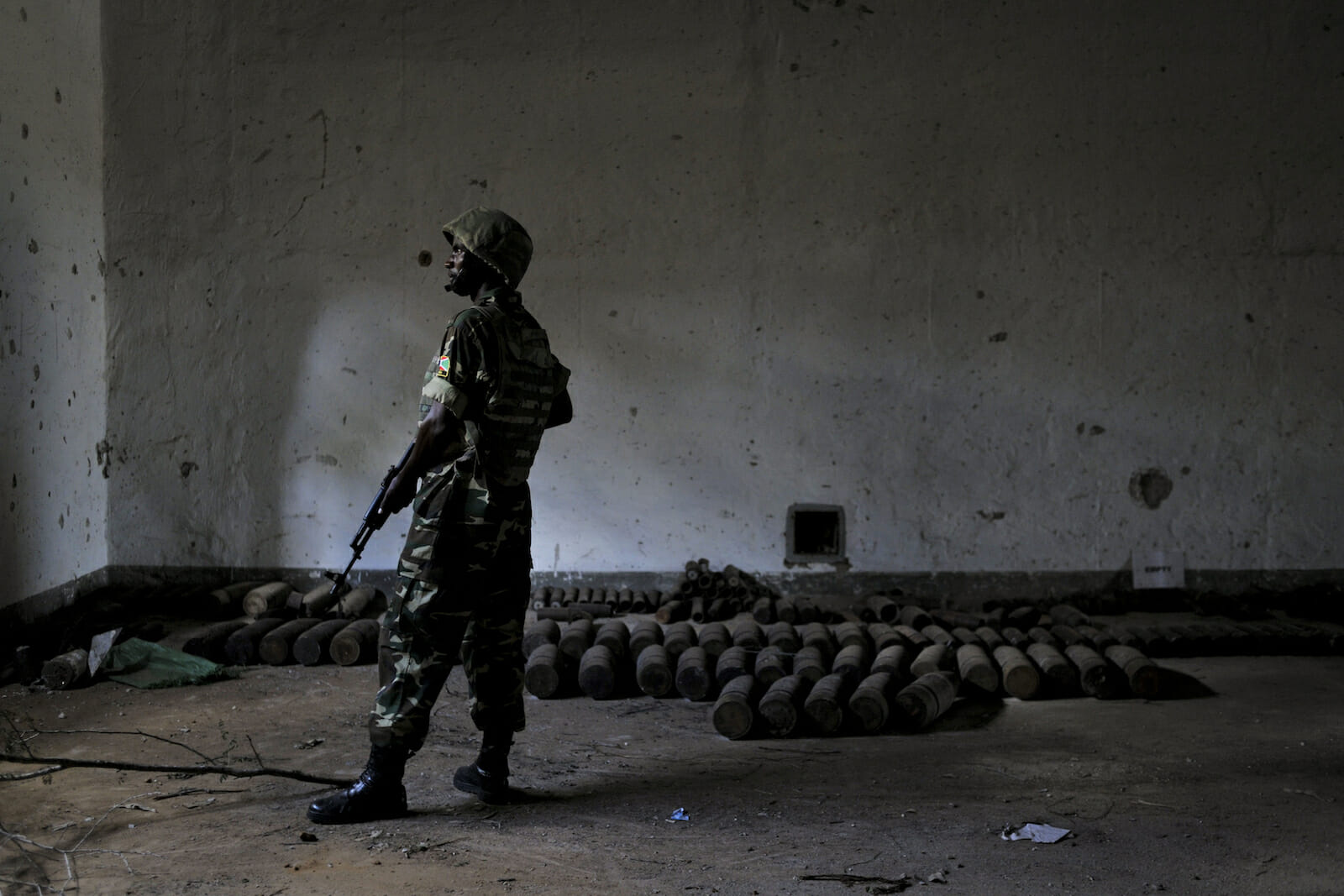
More than a Menace: Al Shabaab’s Extending Reach
There is a dark shadow lurking the streets and country sides of East Africa, waiting in the murky backwaters and city slums, preying on the innocent and the less fortunate. Like an advanced fatal disease, it strikes with swift and shameless disregard, eating away at the fabric of society and causing either death or a dreadful doom for those caught in its merciless path.
There is no choice in the matter for the innocent. They are brazenly used as pawns in a sordid campaign of terror that is driven by extreme ideology and greed. This shadow is Al Shabaab. It has released its vile snarling head for the world to see. Al Shabaab has been East Africa’s largest security threat since 2006, when it led a bloody insurgency against Somalia’s transitional government and its Ethiopian backers in an attempt to take over the weak structures of power in a country with no central government.
It is estimated that over four hundred thousand residents were forced to flee Mogadishu during this time. Al Shabaab subsequently proclaimed its affiliation with Al-Qaeda in 2007 (which may be a dubious claim given its loosely defined structure, but one worth pointing out). In 2009 it banned the UN World Food Program, as well as other international aid agencies, from operating in the drought-prone area of southern Sudan where the group controls most of its territory.
Although the recent famine has caused a reversal of this ban, restrictions still remain. Moreover, starving refugees have had to dodge gun fire from Al Shabaab militants on their long treks to refugee camps in Kenya.
Al Shabaab first ventured outside of Somalia’s clan wars and inter-hostilities in 2010, when it orchestrated a bombing at a sports bar in Kampala, killing 74 people who were out watching the world cup. More recently, two separate kidnappings have occurred on the Kenyan coast near the northern island of Lamu, close to the Somali border. David Tebbutt, a British national, was killed in a raid on September 10th and his wife was taken hostage by forces believed to be either backed or sanctioned by Al Shabaab. The latest kidnapping occurred in the beginning of October, when a French handicapped woman was taken from her resort and wisped across the border to Somalia. Both kidnappings are reported to be affiliated with Al Shabaab.
As tragic as these acts of aggression are, Al Shabaab seems to have hit a new low. It has been reported by the Daily Nation that two aid workers from Médecins Sans Frontières working in the Dadaab refugee camp in Kenya were kidnapped by Al Shabaab gunmen on October 13th during a midday raid. Apparently, the gunmen acted as refugees crossing the Somalia-Kenya border, fitting into the over 400,000 desperate soles who currently occupy a camp designed to hold only 90,000 people.
This action represents a new tactic in their pursuits, albeit one with similar consequences to restricting aid completely. Al Shabaab’s tactics have disturbingly transformed from its guerrilla warfare campaigns and political assassinations in its early years to one of outright hostility to international aid agencies. It has crossed the political divide with a newfound taste for civil society. This presents a loathing dilemma for international aid agencies working in Somalia, northern Kenya, Ethiopia, and even Uganda. It comes down to a decision to either help some of the most marginalized and neglected people in the world, who have been forced to walk for weeks on end in search for food during the famine, and risk kidnapping or even death; or abandon them completely due to high security risks.
The very existence of Al Shabaab is what is at the root of this problem, and its very existence is rooted in poverty, greed, and the pursuit of power. Since 1991, Somalia has not had a central government to control its territories and provide social services to those in need, causing internal warfare among the various clans. Recruitment into armed factions of desperate youth has increased its ranks. Al Shabaab has even recruited jobless youth in the slums of Nairobi, like a parasite feeding on the weakest targets.
Although it is difficult to pinpoint the size of Al Shabaab, analysts predict that it is comprised of several thousand fighters with only several hundred hardcore members who believe in its extreme ideology. It is a loosely held collective of four separate factions, which at times have demonstrated internal friction against each other. It is also not clear if Al Shabaab’s increasing assaults outside of Somalia’s borders are a result of its overall weakening from AMISOM’s (the African Union Mission in Somalia, a military force comprised of Ugandan and Burundian soldiers) recent victories (Mogadishu was recently taken over completely by AMISOM forces but subsequently faced a suicide bombing that took over 100 lives).
The other possibility is that Al Shabaab is growing in strength, with greater resources to expand into other countries. Al Shabaab has reasoned that it withdrew from Mogadishu for tactical purposes, presumably to focus on other areas. Whether or not this is merely an attempt to save face and grasp on to a slowly defeated dream is up for debate. The elusiveness and unpredictability of Al Shabaab make it difficult for national governments and armed forces to counter this threat. Even though Kenya recently established a command centre and six patrol bases near the Somali border, they were unable to prevent or apprehend the recent MSF kidnapping. Although a much more rigorous security presence may be necessary, this seems to be a short term solution at best. After all, the world’s most advanced military has been fighting in Afghanistan for over ten years, with “victory” not in sight.
What must happen for Al Shabaab to be slowly eroded from its base of power is a combination of development (education, health, income generation) and institutional capacity building (government, rule of law, accountability and transparency) in the region. Of course neither of these can be attained without stability and security. All of this makes for a difficult and enormous challenge. However, it is one in which all of East Africa and the rest of the world must pursue. As resources begin to be withdrawn from operation in Libya and Afghanistan, they must be diverted towards Somalia.
Although AMISOM is an African Union initiative, only Burundi and Uganda have dedicated troops. Although the EU has pledged €60 million, much more is needed. The African Union Peace and Security Council has repeatedly requested for a no-fly zone over Somalia to the UN Security Council, which has been denied on each occasion. There will be an even more difficult task with a fledgling European economy, an election cycle coming up in the US, and global stock market volatility.
Nevertheless, the menace of Al Shabaab must be taken up as a top priority by world leaders and acted upon. As Somali President Sheikh Sharif Ahmed has stated, Somalia is not a failed state. However, without determined action, hundreds of thousands of Somalis will continue to suffer, aid workers and tourists will continue to be kidnapped, and bombings will devastate innocent men, women, and children throughout the region. This is more than a menace. This is an assault on humanity.

